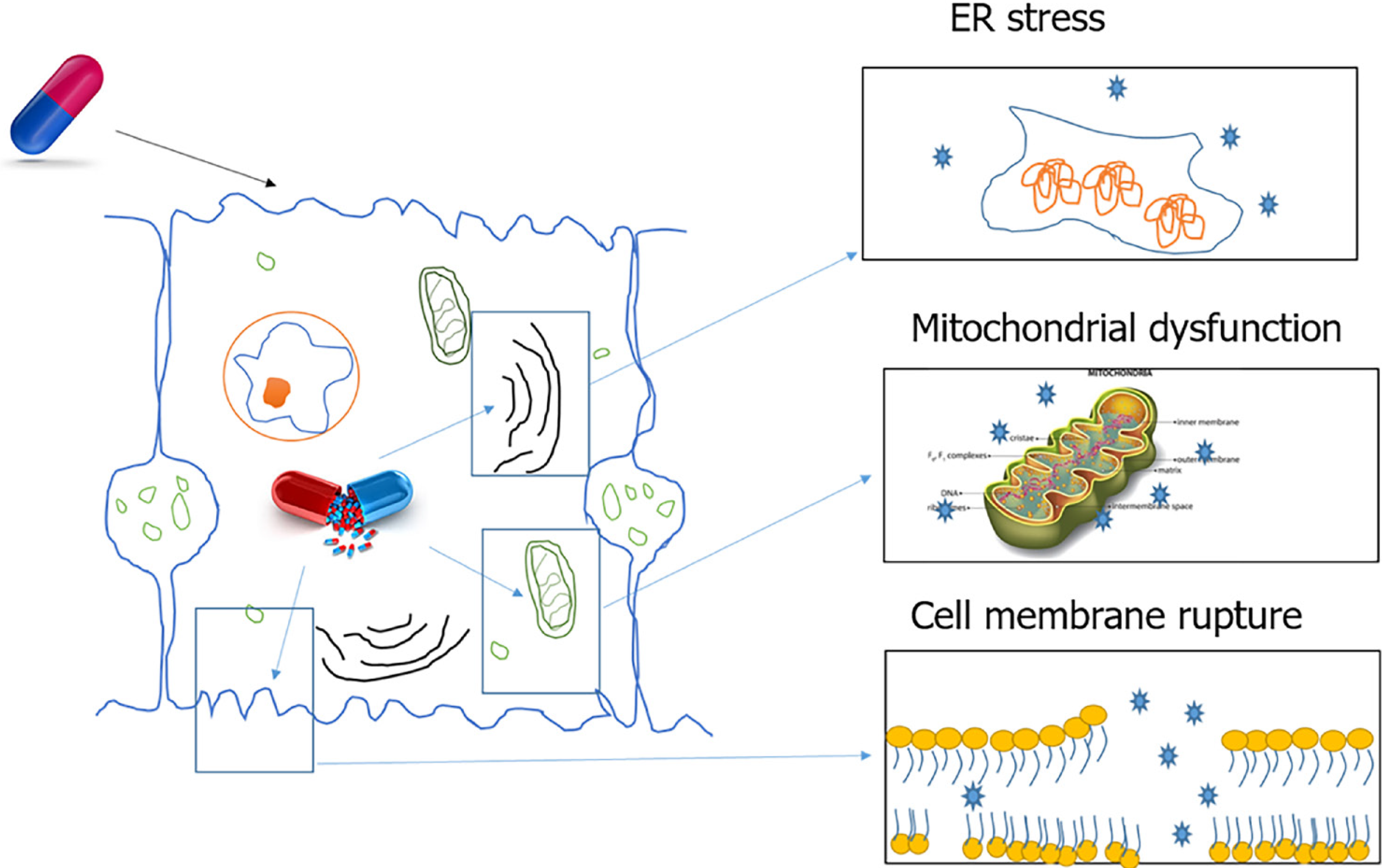Copyright
©The Author(s) 2021.
World J Hepatol. Nov 27, 2021; 13(11): 1677-1687
Published online Nov 27, 2021. doi: 10.4254/wjh.v13.i11.1677
Published online Nov 27, 2021. doi: 10.4254/wjh.v13.i11.1677
Figure 1 Initiation of drug-induced liver injury - Direct damage by drug and metabolite.
Drugs and their metabolites damage organelles and cell membrane of liver cells causing damage. ER: Endoplasmic reticulum.
Figure 2 Initiation of drug-induced liver injury - Indirect damage by drugs.
Drugs can modulate the functioning of enzymes and transporters involved in drug metabolism and elimination that may lead to toxicity.
Figure 3 Immune allergic drug-induced liver injury.
A: Endoplasmic reticulum stress by drug, causes misfolded protein resulting in cell death and release of stress signals and drug-protein complex. Kupffer cells ingest the drug-protein complex to T-helper cells; B: T-helper cells process it and present it to B-cells; C: B-cells produce anti-drug antibodies; D: These antibodies target the tissues, where drug is accumulated. KC: Kupffer cell; HSC: Hepatic stellate cells.
Figure 4 Mechanism of autoimmune drug-induced liver injury.
A: Drug causes mitochondrial dysfunction resulting in cell death and release of HMGB-1 and other stress signals; B: Kupffer cells and Stellate cells get activated. Release cytokines, chemokines and toxins; C: Chemokines attract monocytes; D: Amplification of injury and cell death. KC: Kupffer cell; HSC: Hepatic stellate cells; ROS: Reactive oxygen species.
- Citation: Girish C, Sanjay S. Role of immune dysfunction in drug induced liver injury. World J Hepatol 2021; 13(11): 1677-1687
- URL: https://www.wjgnet.com/1948-5182/full/v13/i11/1677.htm
- DOI: https://dx.doi.org/10.4254/wjh.v13.i11.1677












